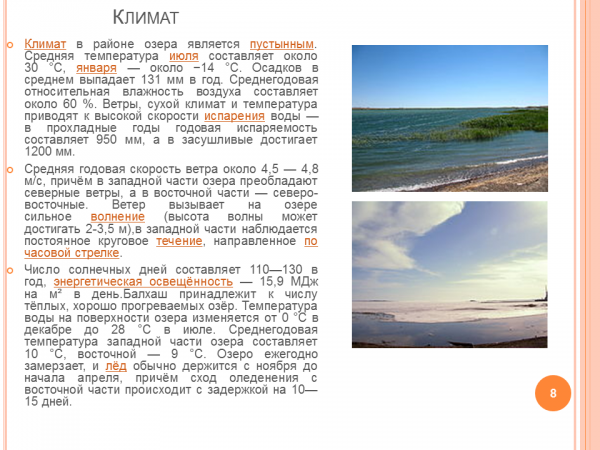Ozero Balhash Prezentaciya

Balkhash Lake, Kazakhstan MIR Agency The large, flowing in from the south, spills into the western part of the lake, and it contributed 80–90 percent of the total influx into the lake until a hydroelectric project reduced the volume of the river’s inflow late in the 20th century. Only such small rivers as the Qaratal, Aqsū, Ayaguz, and Lepsi feed the eastern part of the lake. With almost equal areas in both parts of the lake, this situation creates a continuous flow of water from the western to the eastern section. The water of the western part was almost fresh and suitable for industrial use and, but that of the eastern part has long been salty.
Aplikasi pelacak nomor hp untuk pc. Glympse termasuk aplikasi pelacak nomor hp yang bisa dipasang untuk smartphone Android maupun iOS, Glympse merupakan aplikasi yang dapat digunakan untuk mengetahui lokasi beberapa orang sekaligus, serta memberitahu lokasi di mana anda berada.
Lake Balkhash is one of the largest lakes in Asia and 15th largest in the world. It is located in Central Asia in southeastern Kazakhstan and belongs to an.
The north banks of the lake are high and rocky, with clear-cut traces of ancient terraces. The south banks are low and sandy, and wide belts of them are covered with thickets of reeds and numerous small lakes.
These low-lying banks are periodically flooded by the waters of the lake. Harsh climatic conditions prevail, and the warm summers and cold winters significantly affect the whole regime of the lake. The average annual water temperature in the western part of the lake is 50° F (10° C); in the eastern part it is 48° F (9° C).
Average precipitation is approximately 17 inches (430 mm). The lake remains frozen from the end of November to the beginning of April. Carbonates predominate in the ground deposits of the lake. The fauna of the lake was formerly rich but declined from the 1970s owing to the lake’s deteriorating water quality. Before these declines began, 20 species of fish inhabited the lake, of which six were peculiar to the lake itself.
The remainder had been introduced to the lake and include the sazan, sturgeon, eastern, pike, and Aral. The main food fish were the sazan, pike, and Balqash perch. The economic importance of Lake Balkhash had greatly increased during the first part of the 20th century.
Most significant was the fishing and fish breeding begun in the 1930s. A regular shipping service with a large freight turnover also developed. Also of great economic significance to the region was the construction of the Balqash copper-refining plant, around which the large city of Balqash grew on the north shore of the lake.
However, in 1970 the Qapshaghay hydroelectric-power station began operations on the Ile River. The diversion of water to fill the Qapshaghay reservoir and to provide for irrigation reduced the flow of the Ile River by two-thirds and caused a decline in the lake’s level.

The surface of Lake Balkhash dropped 7 feet (2.2 m) between 1970 and 1987. The lake has become increasingly saline and has also suffered pollution from the leakage of fuel-storage depots and from mining and processing along its shores.
Much of the catch from the is now quarantined, and the forest and wetland habitats around the lake have shrunk. As of the early 1990s, no action had been taken to reverse the ecological damage done to the lake and its surroundings.